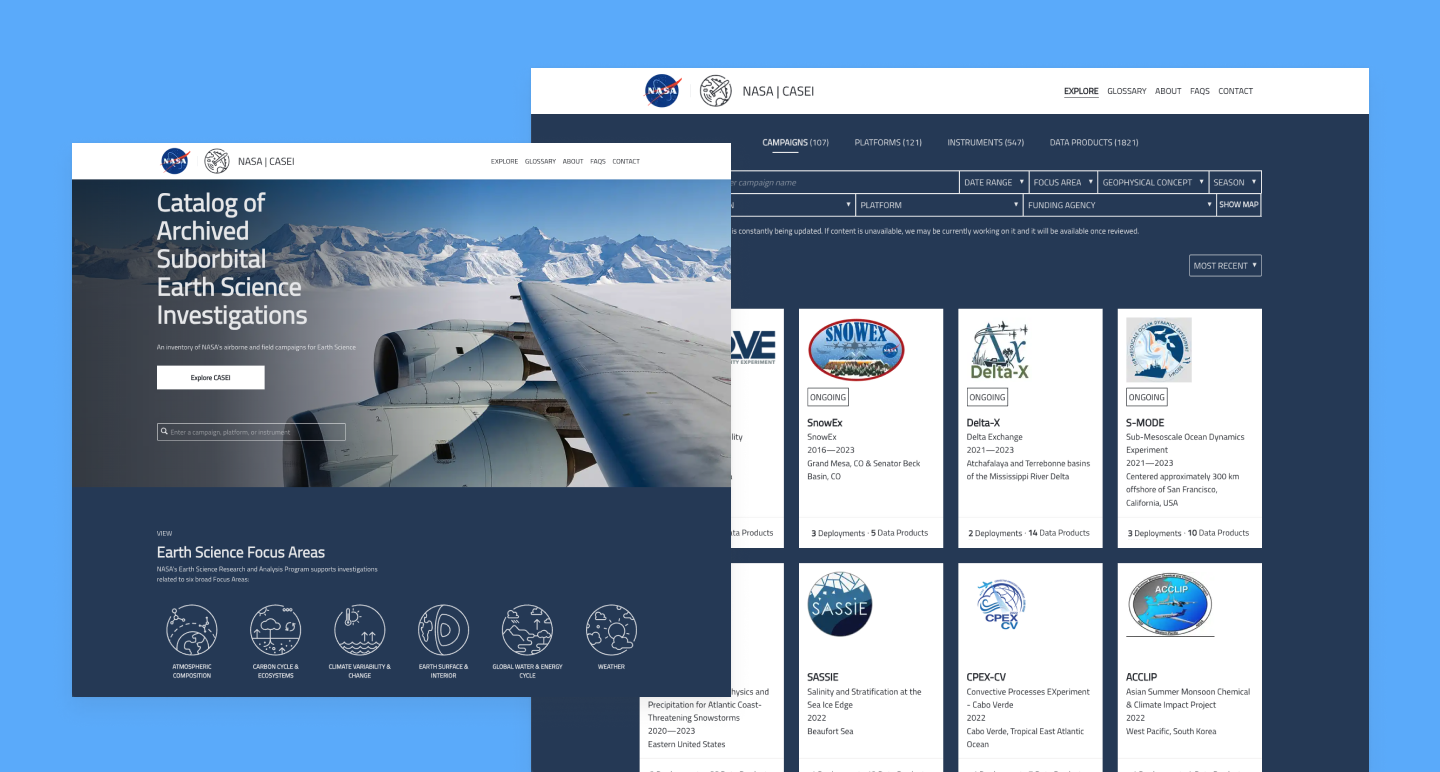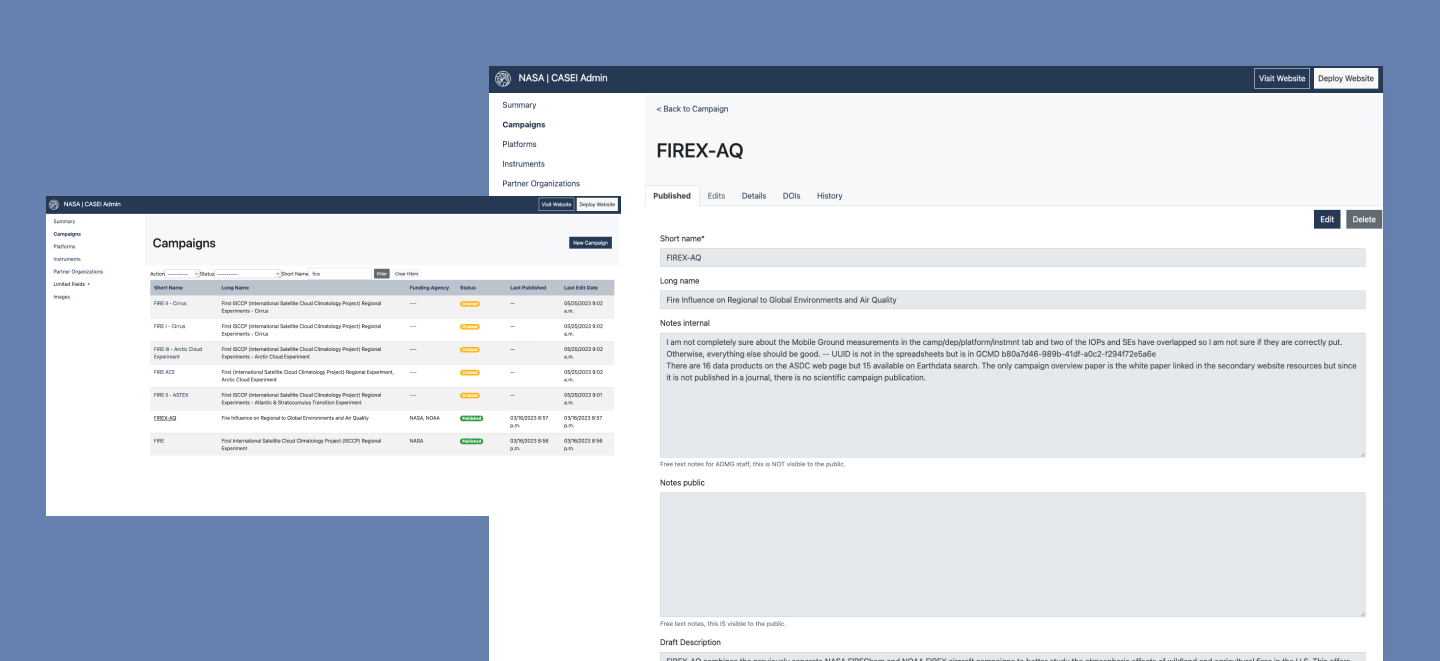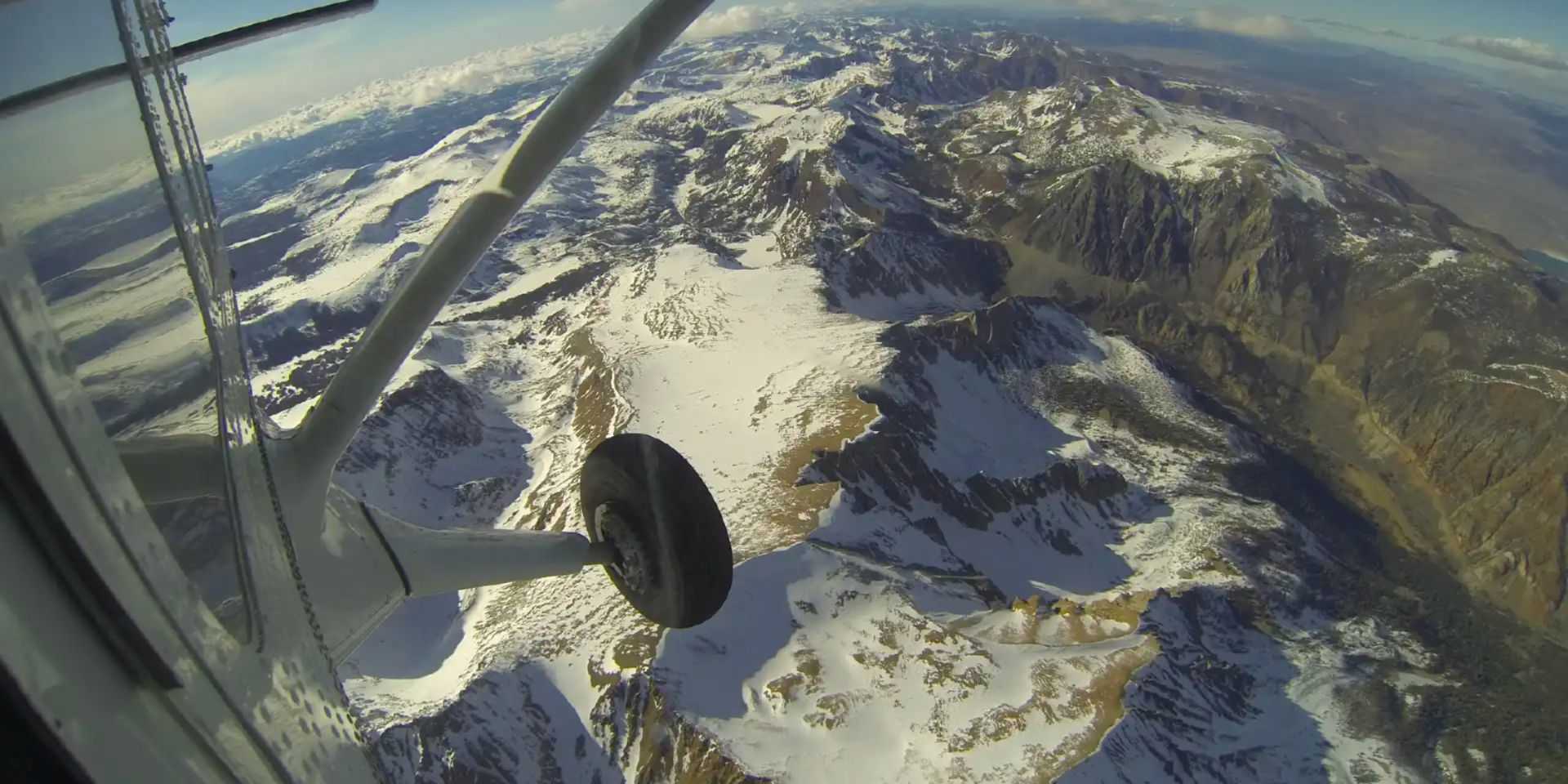CASEI is a centralized, comprehensive repository for NASA-funded field and airborne investigation data. CASEI provides extensive, cross-disciplinary information and context for suborbital research endeavors previously spread out across multiple sources.
Overview
The Catalog of Archived Suborbital Earth Science Investigations (CASEI) allows anyone to find curated information about the context, research motivation, funding for airborne and field efforts, and details on NASA’s non-satellite instruments. Development Seed partnered with NASA IMPACT’s Airborne Data Management Group (ADMG) to create a comprehensive inventory of NASA-funded airborne and field investigation data.
Challenge
There is a lack of a comprehensive inventory that provides holistic, contextual information about NASA's airborne and field investigations. Information today is available elsewhere via scattered and buried resources.
Outcome
CASEI is the most extensive search and discovery platform available to Earth science researchers and anyone interested in learning more about suborbital research endeavors. CASEI is cross-disciplinary and comprehensive, covering a range of geophysical concepts. It stands out for having information that is hard to locate and providing context so scientists can make informed decisions about using it.

CASEI homepage and explore page showing NASA airborne and field investigations.
A search interface for highly curated metadata
While advancements in space-borne observations are growing, non-satellite observations are often less discoverable. Research was conducted with airborne scientists to learn about the unique challenges of working with airborne data, including being broadly distributed, highly linked, and non-standardized. Historical data is hard to find as it is isolated and/or inadequately documented. It is sometimes stored on individual researchers’ hard drives who may have retired or moved on to other studies. Even when looking for the same result, everything from terminology to tools can be nuanced across disciplines, making information harder to find and usable by airborne research communities.
This is why CASEI was designed to promote the exploration of content. The interface makes it easy to explore archived NASA field investigation data across NASA data centers that may be relevant to a scientist’s research but largely unknown. Scientists arriving at CASEI come from various scientific fields and may be interested in niche areas. Once you find the data you came looking for, CASEI also makes it easy to discover other related metadata concepts.
Detailed view of a field campaign showing how it links to other relevant metadata associated with that campaign.
A maintenance interface for data curators to add new metadata
In addition to building a search interface, we developed a maintenance interface to support the ADMG data curators who need to add and update metadata to the catalog. Previously, data collection was managed in a massive spreadsheet, so this system helps keep content entered more secure and less prone to accidental typos and deletion than in a spreadsheet. The data curators also go to great lengths to vet and verify the information they add to CASEI. By moving that information into a database and streamlining the content approval process into a system, the data curators can focus more on data rescue efforts and content curation.

CASEI maintenance interface that allows data curators to add, review, and update metadata.
Reception
In July 2023, CASEI transitioned from beta to full release. Airborne scientists can now discover metadata for a majority of known NASA airborne and field campaigns represented across the database and use a range of search/browse functionality built into CASEI and its API. ADMG won a NASA Silver Achievement Award for exceptional achievements exemplifying one or more of NASA’s Core Values — safety, excellence, teamwork, integrity, and inclusion.
The Way Forward. CASEI's metadata inventory is constantly being updated. Additional campaigns, platforms, instruments, and data products are still being curated. The inventory will continue to grow and even change as ADMG learns more about the unique applications of the data. Having a place to share all this information consistently and organized boosts NASA’s commitment to bridging the gap between satellite observations and the suborbital ground-based data that gives evidence to the phenomenon. CASEI will also continue to promote and enable the reuse of the data, which supports an ethos of Open Science and is a big part of the NASA Earth Science Data Systems (ESDS) Program’s mission for maximizing the return on the Agency’s investments in their collection and preservation.
Learn more about the Airborne Data Management Group and CASEI
- NASA Impact page (https://impact.earthdata.nasa.gov/project/admg.html)
- NASA Earth Science Data Systems (ESDS) Program page (https://www.earthdata.nasa.gov/esds/impact/admg)
About NASA IMPACT
NASA’s Interagency Implementation and Advanced Concepts Team (IMPACT) drives the development of the latest technologies for novel Earth data science and applications. Development Seed has partnered with IMPACT to advance its goals of enhancing data infrastructure and technology to encourage the adoption of complex Earth observation data within other federal agencies, institutions, and science users.
Related content
More for you
Have a challenging project that could use our help?
Let's connect
We'd love to hear from you.
